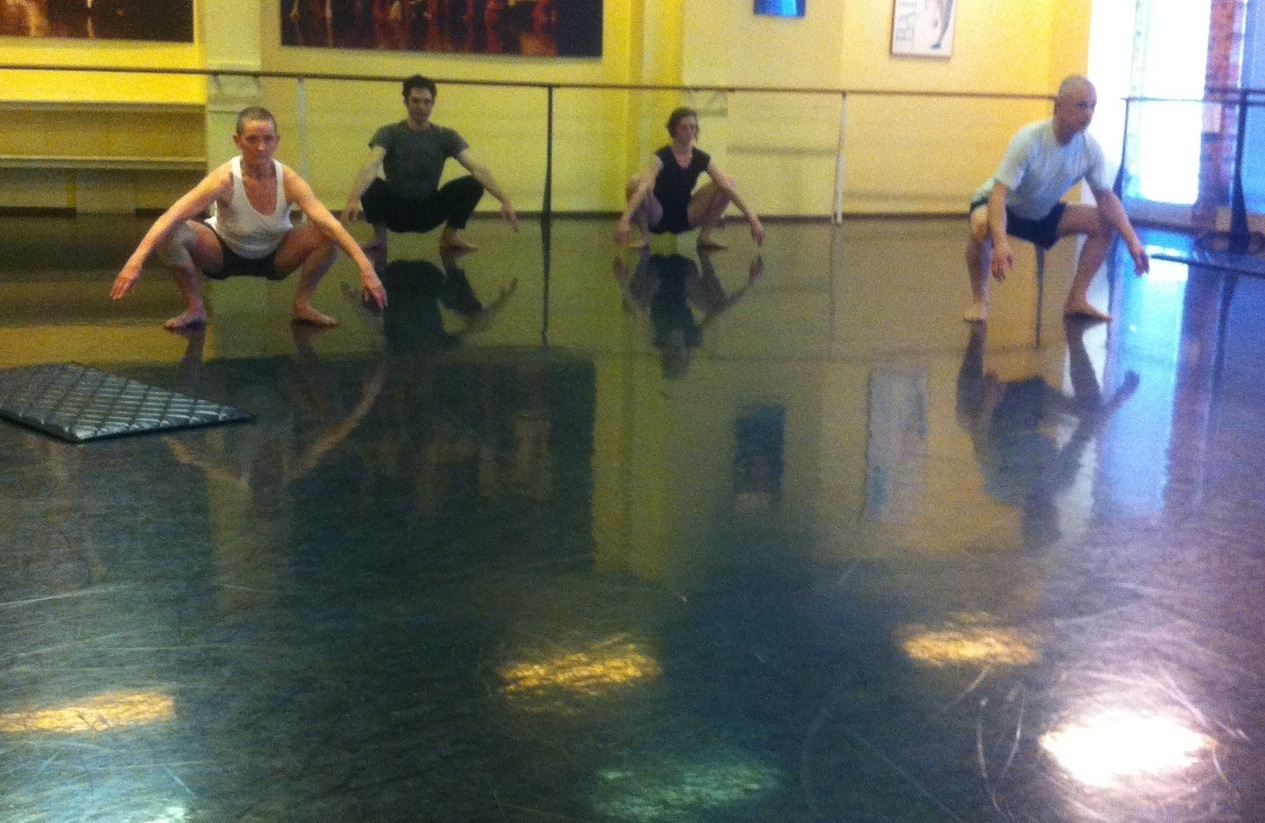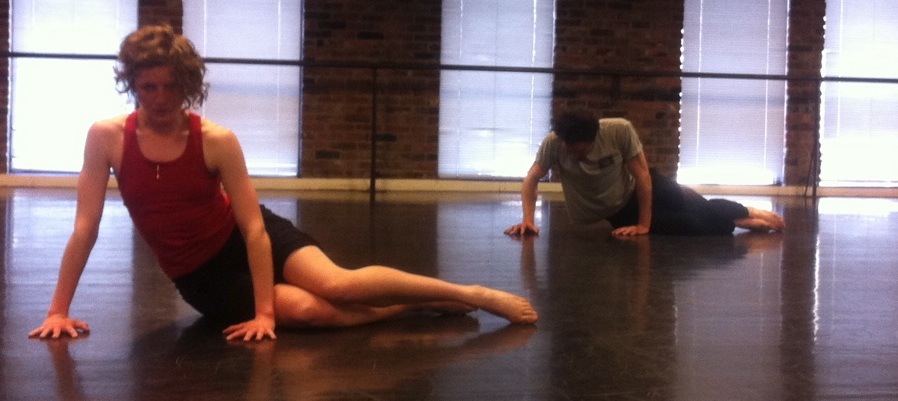 For me, a crucial part of the development process of Book of Love was the time spent in the dancers’ rehearsal studio, watching the choreography so that I could respond with musical ideas. As much as it was exhilarating, I was still getting used to working without my usual net. And it was really hard to think about music when it was quite easy to sit back and let myself be transported by these four amazing dancers dancing.
For me, a crucial part of the development process of Book of Love was the time spent in the dancers’ rehearsal studio, watching the choreography so that I could respond with musical ideas. As much as it was exhilarating, I was still getting used to working without my usual net. And it was really hard to think about music when it was quite easy to sit back and let myself be transported by these four amazing dancers dancing.
Though I still had a lot of freedom, the music also had to “fit” with the movement that Jay and Barbara were choreographing. Sometimes that meant it would have a similar tone and character to the choreography. Other times that meant writing something to counterpoint with the choreography, perhaps in unexpected ways. Also, in the early stages, I was “just writing”, not knowing what movement would go with what music, or where that music would be in the structure of the whole piece. As a planner, it’s a challenge for me to dive in “not knowing”!
Last April was the first time that we tried combining music and choreography in the studio. For the show, the music will be played live on stage by Standing Wave. But obviously hiring a sextet to be in the studio to experiment for an entire week would be a wee bit costly. I had written a long two-part movement. How to have the dancers hear it? Well, I copied the score into the computer and did something I never ever do: I made a (shudder) MIDI file (/shudder).
A word on Musical Instrument Digital Interface, a.k.a. MIDI: I despise it. I’m distressed that more and more composers rely on it for composing, because it trains their ears to hear those sounds, rather than imagining the sound. If you want to guarantee that I won’t listen to your piece, send me a MIDI recording.
The notation program Finale will export a score as a MIDI file, with computerised versions of instruments. They sound like computerised versions of instruments. Even the best MIDI sounds don’t sound close to the real thing. The “violin” sound is harsh and ugly. The “cello” is never loud enough. The gentle rolls of the low marimba sound like a flock of woodpeckers. Slowing down or speeding up is complicated. I had to enter the score, then make another version of that score that faked a lot of the effects that I needed, like trills and tremolos, and export that. I was mortified to have the dancers hear it (they were kind to me). But they had to have some sense of what the music was doing, because it was certainly not like the recorded music they had been working with. And I needed to see how the ideas fit together.
A couple of things really surprised me. As part of the early experimentation process, we took the first part of what I’d written, and tried it with a section of choreography. It worked (after I’d stopped cringing at the MIDI sounds), and the dancing brought out certain aspects and emotions in the music. Then the dancers tried the same music with a different section of choreography. It also worked — but the different dancing brought out different aspects and emotions. Fascinating! Then we tried the second part of the music with the same choreography. Amazingly, when the same movement was combined with different music, it brought out different aspects and emotions in the dance! I was thrilled to learn not just that the music could work, but that at this stage it didn’t have to be hard and fast in my own mind what music went with what dance — I could continue writing for a while without worrying about that.
The other thing that surprised me, even though I was slightly prepared for it, was how differently musical time passes when it’s combined with dance. My friend Jocelyn Morlock, who wrote a piece for ballet for Turning Point Ensemble, had advised me about this, and it proved to be very true. When an audience experiences only music, it can take in and process only so much information in a certain amount of time. But when an audience experiences music and dance, that’s more information at once. Simultaneously processing both new sounds and new movement takes more mental energy, and therefore more time. So music that uses repetition or returns to material already heard really helps with dance. As does a slower tempo, as I discovered in the dance studio. Though the music I’d written first was slow, and I had slowed it down more as I was crafting it, once we combined it with dance, it was unmistakable to me that it was still too fast. The unfolding and rising of the music happened too quickly, and demanded so much from listening that it conflicted with the dance rather than meshing with it. So I went home that first day and let the music take its time, with more repetitions of phrases and an even slower tempo. It created a different sense of space, and the next day, armed with a new (shudder) MIDI file (/shudder), it worked even better. And my six-minute movement had become a seven-minute movement! I was so glad to have experienced firsthand that special relationship between time, music and movement, because it informed everything I wrote after that, especially the fast music (because I do like fast music, and an hour of only slow music would be dreadful).
First workshop over, and I had a lot more confidence, perspective and experience to get on with the task of composing the remaining musical chapters of Book of Love. And then figuring out what order those chapters would be in. Which is for another post.
(Dancers: Barbara Bourget, Molly McDermott, Jay Hirabayashi, Billy Marchenski)




These insights “from the forge” are very interesting and thought-provoking. I would not a priori have thought much about the information-density aspect of combining two performing arts forms, but it makes sense once you describe it this way. I’m looking forward to more.